Properties
| Storage Buffer | PBS, 50% glycerol, 0.09% sodium azide *Storage buffer may change when conjugated |
| Storage Temperature | -20ºC, Conjugated antibodies should be stored according to the product label |
| Shipping Temperature | Blue Ice or 4ºC |
| Purification | Protein G Purified |
| Clonality | Monoclonal |
| Clone Number | 60B1220.1 |
| Isotype | IgG1 Kappa |
| Specificity | Detects ~180kDa. It will cross-react with mouse DNMT1. |
| Cite This Product | StressMarq Biosciences Cat# SMC-200, RRID: AB_2293057 |
| Certificate of Analysis | 2 µg/ml of SMC-200 was sufficient for detection of Dnmt1 in 10 µg of mouse ES cell lysate by colorimetric immunoblot analysis using Goat anti-mouse IgG:HRP as the secondary antibody. |
Biological Description
| Alternative Names | DNA Mtase Antibody, DNMT Antibody, MCMT Antibody, DNA methyltransferase 1 Antibody, AIM Antibody, CXXC9 Antibody, DNMT Antibody, DNA (cytosine-5)-methyltransferase 1 Antibody, CXXC-type zinc finger protein 9 Antibody, DNA methyltransferase HsaI Antibody |
| Research Areas | Cell Signaling, Organelle Markers, Post-translational Modifications |
| Cellular Localization | Nucleus |
| Accession Number | NP_001370 |
| Gene ID | 1786 |
| Swiss Prot | P26358 |
| Scientific Background | Methylation of DNA at cytosine residues plays an important role in regulation of gene expression, genomic imprinting and is essential for mammalian development. Hypermethylation of CpG islands in tumor suppressor genes or hypomethylation of bulk genomic DNA may be linked with development of cancer. To date, 3 families of mammalian DNA methyltransferase genes have been identified which include Dnmt1, Dnmt2 and Dnmt3. Dnmt1 is constitutively expressed in proliferating cells and inactivation of this gene causes global demethylation of genomic DNA and embryonic lethality. Dnmt2 is expressed at low levels in adult tissues and its inactivation does not affect DNA methylation or maintenance of methylation. The Dnmt3 family members, Dnmt3a and Dnmt3b, are strongly expressed in ES cells but their expression is down regulated in differentiating ES cells and is low in adult somatic tissue. Dnmt1 co-purifies with the retinoblastoma (Rb) tumour suppressor gene product, E2F1, and HDAC1. Dnmt1 also cooperates with Rb to repress transcription from promoters containing E2F-binding sites suggesting a link between DNA methylation, histone deacetylase and sequence-specific DNA binding activity, as well as a growth-regulatory pathway that is disrupted in nearly all cancer cells (1-6). |
| References |
1. Bestor T., et al.(1988) J.Mol. Biol. 203: 971-983. 2. Yen R.W., Vertino P.M., Nelkin B.D., et al. (1992) Nucl. Acids Res. 20: 2287-2291. 3. Xie S., et al. (1999) Gene 236: 87-95. 4. Okano M., Bell D.W., Haber D.A. and Li E. (1999) Cell 99: 247-257. 5. Reik W. et al. (1999) J. Nat. Genet 23: 380-382. 6. Robertson K.D., et al. (2000) Nat Genet 25(3): 338-342. |
Product Images
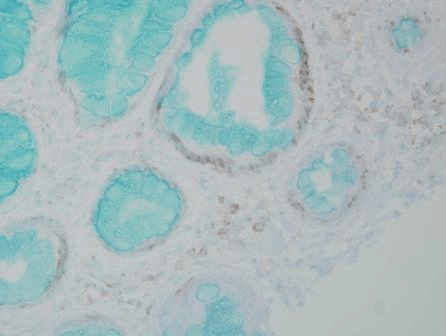
Immunohistochemistry analysis using Mouse Anti-DNMT1 Monoclonal Antibody, Clone 60B1220.1 (SMC-200). Tissue: colon carcinoma. Species: Human. Fixation: Formalin. Primary Antibody: Mouse Anti-DNMT1 Monoclonal Antibody (SMC-200) at 1:10000 for 12 hours at 4°C. Secondary Antibody: Biotin Goat Anti-Mouse at 1:2000 for 1 hour at RT. Counterstain: Mayer Hematoxylin (purple/blue) nuclear stain at 200 µl for 2 minutes at RT. Magnification: 40x. ABC solution 1:1000 dilution, DAB solution 100-200uL/ slide.
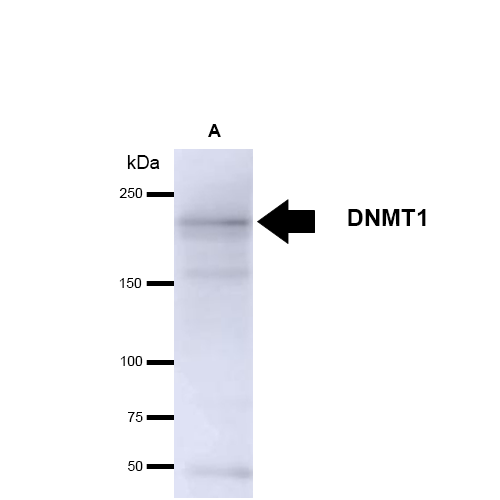
Western Blot analysis of Human 293T cell lysates showing detection of ~180kDa DNMT1 protein using Mouse Anti-DNMT1 Monoclonal Antibody, Clone 60B1220.1 (SMC-200). Lane 1: Molecular Weight Marker. Lane 2: Human 293T Cell lysate. Load: 15 µg. Block: 1.5% BSA in 1X TBST. Primary Antibody: Mouse Anti-DNMT1 Monoclonal Antibody (SMC-200) at 1:1000 for 2 hours at RT. Secondary Antibody: Goat Anti-Mouse IgG: HRP at 1:4000 for 1 hour at RT. Color Development: ECL solution for 5 minutes at RT. Predicted/Observed Size: ~180kDa. Other Band(s): Lower bands are DNMT1 degradation.
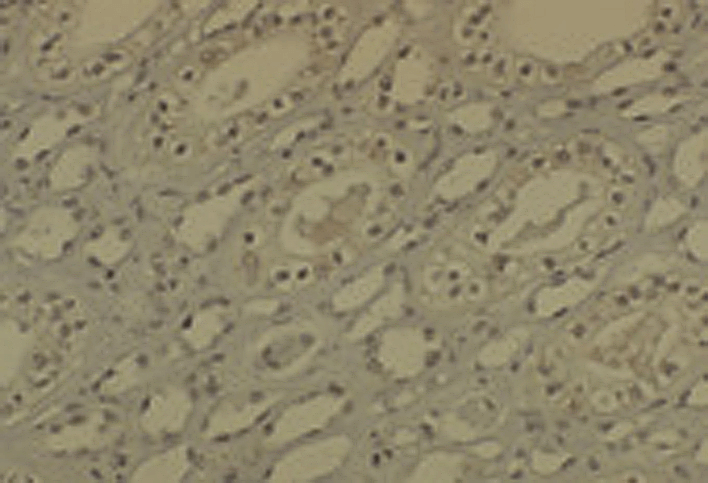
Immunohistochemistry analysis using Mouse Anti-DNMT1 Monoclonal Antibody, Clone 60B1220.1 (SMC-200). Tissue: medullar kidney tissue. Species: Mouse. Primary Antibody: Mouse Anti-DNMT1 Monoclonal Antibody (SMC-200) at 1:1000. Secondary Antibody: HRP/DAB Detection System: Biotinylated Goat Anti-Mouse, Streptavidin Peroxidase, DAB Chromogen (brown). Counterstain: Mayer Hematoxylin (purple/blue) nuclear stain.

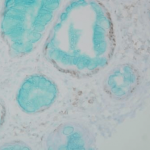
![Mouse Anti-DNMT1 Antibody [60B1220.1] used in Western Blot (WB) on Human H1299 cell lysate (SMC-200)](https://www.stressmarq.com/wp-content/uploads/SMC-200_DNMT1_Antibody_60B1220-1_WB_Human_H1299-cell-lysate_2-100x100.png)
![Mouse Anti-DNMT1 Antibody [60B1220.1] used in Immunohistochemistry (IHC) on Mouse medullar kidney tissue (SMC-200)](https://www.stressmarq.com/wp-content/uploads/SMC-200_DNMT1_Antibody_60B1220-1_IHC_Mouse_medullar-kidney-tissue_1-100x100.png)




















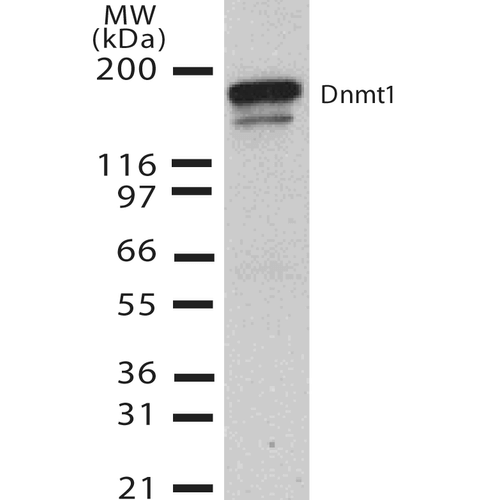
Reviews
There are no reviews yet.